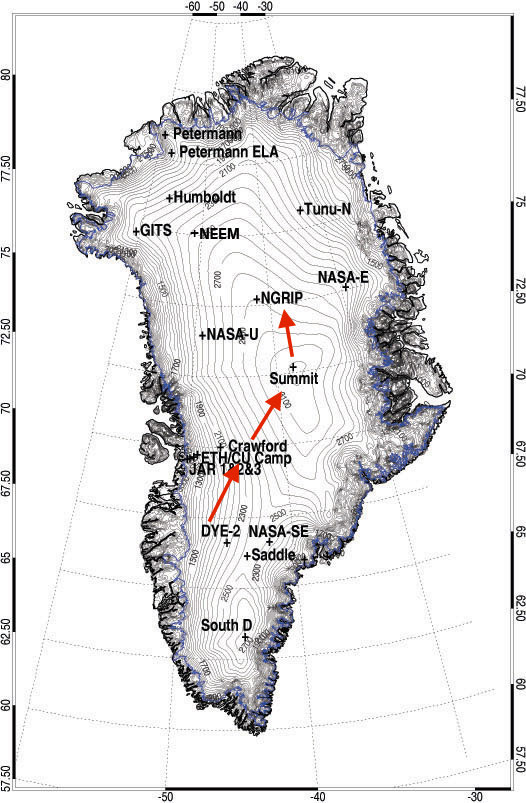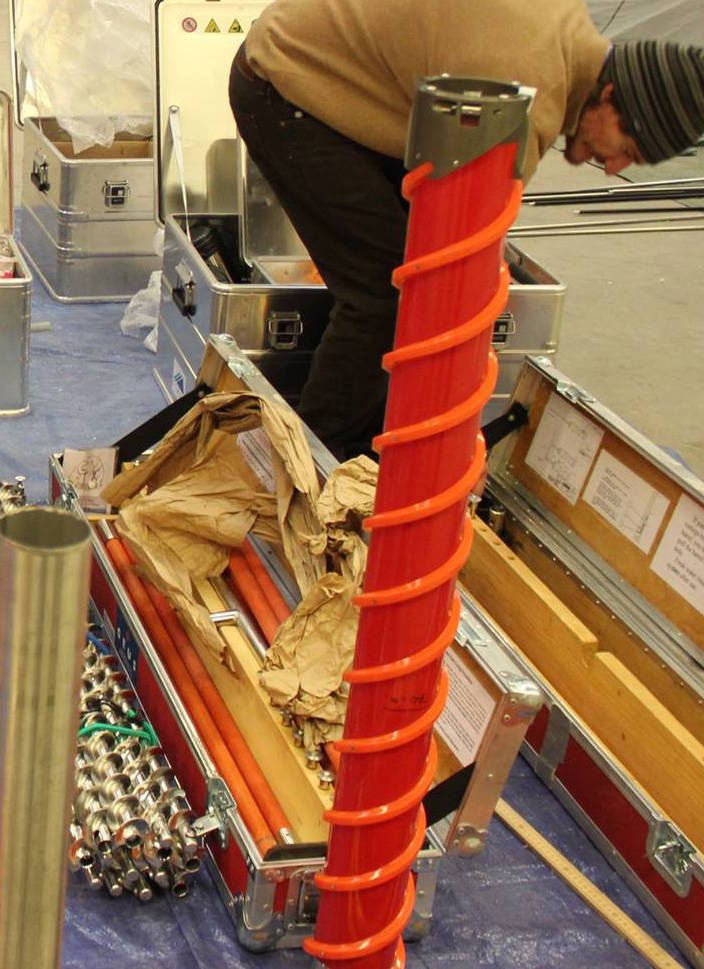The crew arrived at Crawford Point this morning around 9AM (local time) and got to work while the pilots left to refuel in Ilulissat. Instruments were successfully installed, but not without any hitches. Several hours were spent using aircraft cable – among other methods – attempting to fish out a Kovacs coring drill barrel that got stuck about 14 meters (46 feet) down into the ice after a section had broken off. Unfortunately, they had no luck in retrieving the $6,000 piece of equipment, which is now a permanent fixture in the ice. Luckily, due to careful planning, the team is prepared with a second core drill.
After a long day at Crawford Point, the team was flown to Summit Camp and arrived at approximately 10PM (local time). Tomorrow will be another tough, long day as they will be flying up to NEGIS between 10AM-12PM, complete work there, then fly back to Summit at the end of the day.

Greenland Climate Network (GC-Net) Map. Courtesy of Steffen Research Group, CIRES. Source: bit.ly/1HK0hit
Summit Station is quite unique in that it is somewhat of a small “city” at the peak of the ice sheet located at 400km (~250mi) from the closest point of land at an elevation of 3200m (~10,500ft). Unlike the abandoned DYE 2 station, Summit Station is the home of the Greenland Environmental Observatory (GEOSummit) where year-round climate monitoring is conducted.
The buildings are spaced apart to minimize drifting, a major problem on the ice cap. Buildings are raised back to grade as needed. Innovative design has been implemented at Summit to mitigate the effects of snow accumulation, including jackable structures and mobile structures on ski platforms. Planning is centered on maintaining the pristine environment and scientific record at Summit Station.


